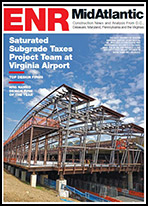Diversity and Reach
Some regional firms have combated the slow economy by increasing their diversity and geographic reach and boosting business development efforts.
“Our overseas work as well as federal government projects were stronger than a lot of other sectors,” says Kevin Andrew, COO/CFO and principal at Denver's RNL. “We also managed our cash tightly so that we retained our operations and key staff through a choppy recovery.”
Don Finlayson, president of Architectural Nexus Inc., Salt Lake City, says, “We maintained our financial strength in order to diversify our target markets, then aggressively worked to go after projects that included government stimulus money.”
Others chose an even more radical approach. “Architects tend to contract in the midst of a bad economy—go into survival mode, cut staff, reduce investment, reduce risk, shrink their vision and plans for the future,” says Barry Koury, principal at Denver's MOA Architecture. “We chose to fly in the face of conventional wisdom by expanding into new markets—adding health-care and higher education design services—and increased our service reach, even adding a Wyoming regional office.”
Rather than slash marketing budgets, some firms have invested more in client outreach. “We have placed an emphasis on marketing who we are and what skills and values we bring to clients that may differentiate us from others,” RB+B's Field says.
Size Matters
This year's design rankings also demonstrate that size matters. The large, multidisciplinary firms provide more one-stop services for clients. CH2M HILL, HDR, AECOM, Jacobs, Merrick & Co. and other regional giants that offer architecture as well as engineering services have used their in-house diversity to thrive in the lean economy, growing revenue while smaller, niche-market firms have struggled.
HDR and CH2M HILL swapped the number one and two spots in the Intermountain and Colorado rankings, with strong performances across multiple disciplines, but HDR earned ENR Mountain State's Design Firm of the Year honors because of its work on two of the region's most important projects, the I-15 CORE highway expansion in Utah and Denver's FasTracks light rail.
But even the larger design firms remain concerned. “Even as other segments of the economy recover, design, construction and real estate markets continue to be weak,” RNL's Andrew says. “We are concerned this could delay the overall recovery.”


